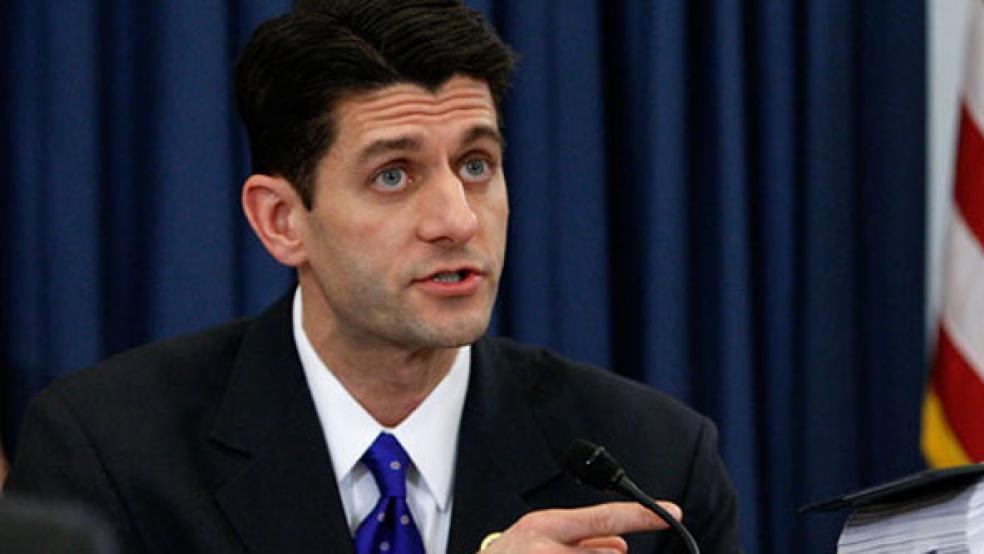House Republicans on Wednesday unveiled proposals for billions of dollars of deep cuts in domestic spending programs this year, including reductions that take aim at the Obama Administration initiatives such as high speed rail, renewable energy programs and community health centers.
Rep. Harold Rogers, R-Ky., the new Chairman of the House Appropriations Committee, issued a partial roster of 70 spending cuts that will be included in an upcoming continuing resolution to keep the government operating through the remainder of the fiscal year ending Sept. 30.
The cuts come days before what is shaping up as an epic budget battle between the GOP and President Obama and congressional Democrats over ways to reduce a federal budget that will reach $1.5 trillion this year, according to projections from the Congressional Budget Office.
Among those cuts:
--$1 billion for high speed rail. On Monday, the Obama Administration proposed a six-year $53 billion investment in high speed rail. As part of his State of the Union address ,Obama announced a goal of having high speed rail reach 80 percent of Americans in 25 years.
--$899 for renewable energy programs. Obama has called for the elimination of tax subsidies for fossil fuel production worth $4 billion a year in order to boost spending on renewable energy and electric cars.
--$1.6 billion for the Environmental Protection Agency. This would be an 18 percent reduction for the whole year. But in order to achieve those savings, total funding available for the remainder of the year would have to be cut by 32 percent, which would have a huge detrimental impact, said Jim Horney, Director of Federal Fiscal Policy at the Center on Budget and Policy Priorities. “In this case it’s not a matter of trying to oppose some initiative from the Obama Administration, they want to cut spending substantially to what is done now,” Horney said.
The package of proposed cuts adds up to $74 billion when compared to President Obama’s 2011 budget fiscal year request. However, that budget was never enacted last year, and Congress froze most discretionary spending (for programs other than entitlements and interest on the debt) at last year’s levels of approximately $1.1 trillion. The politically divided Congress must agree to a new spending bill in order to avoid a government shutdown on March 4, when temporary funding expires.
Rogers will introduce the Continuing Resolution on the House Floor Thursday, and it which will include the full details on the cuts.
“Never before has Congress undertaken a task of this magnitude,” Rogers said in a statement. “The cuts in this CR will represent the largest reduction in discretionary spending in the history of our nation.”
But Chris Edwards of the Cato Institute, a libertarian think-tank, says this is not true. He says that President Ronald Reagan's spending cuts during the early 1980s were bigger.
Rogers also called for deep cuts across the board from education, food aid, and inspection services. The Internal Revenue Service would see $593 million in cuts and additional $1.4 billion would come from the Office of Science. The National Institutes of Health, which conduct medical research, would be cut by $1 billion.
Meanwhile, Democrats are calling on Republicans to reduce government spending, but using what they call “common-sense cuts.” “We need to cut spending, but we need to do it by focusing on waste,” said Sen. Charles Schumer, D-N.Y., Chair of the Democratic Policy and Communications Center. “This proposal would get rid of cops that keep our streets safe, food inspectors that keep our food safe, and cut home heating oil for seniors. These are extreme ideas that will take the country backwards, and the House Republicans seem too willing to shut down the government to get their way.”
Rogers’ announcement comes one week after House Budget Committee Chair Rep. Paul Ryan, R-Wis., laid out cuts totaling $32 billion for the remainder of the fiscal year.
The flurry of cuts proposed by Rogers is still smaller than the $100 billion pledge from Republicans during the mid-term elections last year. The Republican House Study Committee said they would cut tens of billions of dollars more than what Ryan has proposed and ultimately block funding for Obama’s prized health care law. They have said their goal is to get total Fiscal 2011 non-security spending back to $378 billion (2008 levels), which is $100 billion less than the Democrats’ spending plan. Rogers’ proposed cuts would set non-security spending for the year at $420 billion, and the RSC would look to slash another $42 billion.
"If the original bill does not get to $100 billion in savings, we plan to offer an amendment to get all the way there," said Brian Straessle, spokesman for the RSC.
The Tea Party has promised to seek deeper cuts, which would create potentially high octane tensions between the conservatives.
“These are small cuts,” Edwards said. “They trim a little from a lot of different agencies, rather than eliminating them. The problem with small trims is that the spending will likely grow back in the future if the basic program structure remains.”
Over the weekend the President’s Budget Chief Jacob Lew wrote a preview in a New York Times op-ed of Obama’s fiscal year 2012 budget. It includes a five-year spending freeze on non-discretionary spending. However, Lew’s belt-tightening measures were seemingly modest. Lew met with House Democrats Wednesday morning to talk about budget strategy.
Related Links:
Republicans Call for $74 Billion in Spending Cuts (Financial Times)
GOP Leaders Propose $74 Billion in Cuts to Obama’s Budget Request (Washington Post)
GOP Cuts Target EPA, High Speed Rail (Politico)


